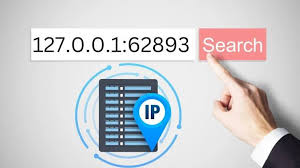The world of networking is intricate, with numerous IP addresses and ports playing critical roles in the seamless operation of systems. One such significant term is 127.0.0.1:62893. This article aims to delve deep into the details of this keyword, exploring its relevance, functionality, and common use cases.

What is 127.0.0.1:62893?
People commonly refer to 127.0.0.1 as the loopback address or localhost. A computer uses this IP address to communicate with itself. When paired with a port number like 62893, it specifies a particular pathway or service running on that address.
Why is 127.0.0.1 Important?
The loopback address is crucial for testing and development purposes. It allows developers to run servers on their local machines without exposing them to external networks. This setup ensures a safe environment for testing applications and services.
The Role of Port 62893
In the context of 127.0.0.1:62893, 62893 is the port number. Ports are endpoints of communication in networking. They help in distinguishing between different services running on the same IP address. For example, a web server might run on port 80, while an email server might use port 25.
ALSO READ: Unlocking Creativity with Robots Dot to Dot by Nattapong A Comprehensive Guide
Common Use Cases of 127.0.0.1:62893
- Local Development: Developers use 127.0.0.1:62893 to test applications locally. By doing this, they ensure that the application works correctly before deploying it to a live environment.
- Debugging: This setup is also used for debugging purposes. Developers can easily identify and fix issues without affecting the live environment.
- Security: Using 127.0.0.1 for testing prevents unauthorized access from external networks, enhancing security during the development phase.
How to Use 127.0.0.1:62893
To use 127.0.0.1:62893, configure your application or service to listen on port 62893. Here’s a step-by-step guide:
Step 1: Configure Your Application
Ensure that your application listens on port 62893. You can typically find this configuration in the application’s settings or configuration files.
Step 2: Accessing the Service
Open your web browser or any client application and type 127.0.0.1:62893 in the address bar. This action will direct you to the service running on that port on your local machine.
Step 3: Troubleshooting
If you face issues accessing the service, ensure no other application is using port 62893. You can use networking tools to check for port conflicts.
Benefits of Using 127.0.0.1:62893
- Isolation: Testing services on 127.0.0.1 ensures they are isolated from the external network, preventing interference and unauthorised access.
- Control: Developers have complete control over the environment, allowing for precise testing and debugging.
- Convenience: Local testing is convenient and faster, as it eliminates the need for an active internet connection.
FAQs
Q: What is the purpose of the loopback address?
A:CThe loopback address is used for testing and inter-process communication on a local machine. It allows a computer to communicate with itself.
Q: Why use port 62893 specifically?
A: Port 62893 might be chosen arbitrarily for testing a specific application. Choosing this port ensures that other services do not commonly use it, which reduces conflicts.
Q: Can I use 127.0.0.1:62893 for production?
A: While 127.0.0.1 is generally used for development and testing, it is not advisable for production as it restricts access to the local machine only.
Q: How do I check if port 62893 is free?
A: You can use networking tools like netstat or lsof to check if port 62893 is free. These tools show which ports various services are using.
Q: What should I do if port 62893 is already in use?
A: If port 62893 is in use, you can either stop the service using it or configure your application to use a different port.
Conclusion
Understanding 127.0.0.1:62893 is essential for developers working in local environments. It provides a secure and isolated setup for testing and debugging applications. By following the steps and best practices outlined in this guide, you can efficiently utilize 127.0.0.1:62893 for your development needs.
- Muppet with Long Hooked Beak A Dive into the World of Iconic Characters - 4 October 2024
- Arias Agencies Lawsuit Understanding The Legal Battle and Its Implications - 4 October 2024
- Hyunjin Rising Star in the K-Pop World - 4 October 2024
